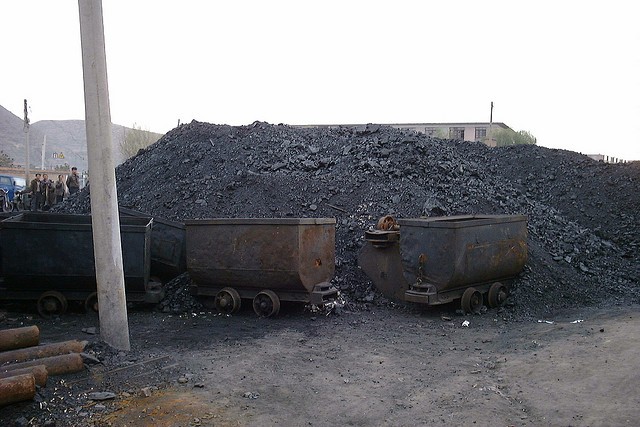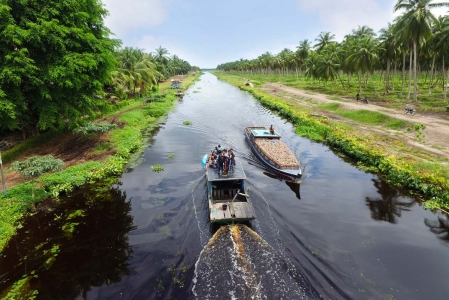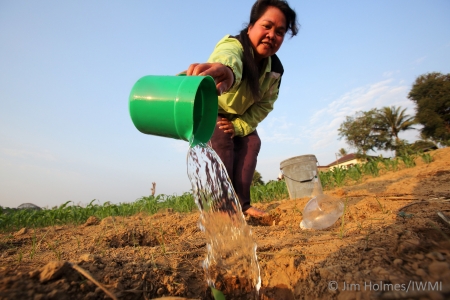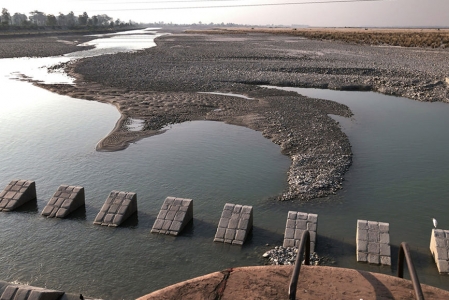The Water-Food-Energy Nexus in the Mekong Region
Would you like to know the future? More specifically, the future of the Mekong River Basin? You could go to a fortune teller, or, assuming you would prefer something rather a bit more realistic and reliable, you could read Smajgl and Ward’s excellent compilation of recent research on Mekong futures.

The authors of Nexus offer a cross-sectoral, multi-scale assessment of development-directed investments in the wider Mekong Region. This systems oriented approach is both welcome and much needed in the ongoing debates about Mekong development.
The strength of Nexus lies in the stature of the editors and contributing authors. Smajgl and Ward were leads on the recently completed Exploring Mekong Region Futures Project and have decades of experience in the region. They have recently started the Mekong Futures Institute to build on their previous work.
The names of the chapter authors will be familiar to most people even slightly acquainted with Mekong issues: David Fullbrook, Kate Lazarus, Lilao Bouapao, Lu Xing, Sokhem Pech, and Tira Foran. These are people with significant experience in Mekong issues and a wealth of knowledge and insight.
Smajgl and Ward begin by suggesting that a limited set of dynamics generate a high level of connectivity between Mekong countries, specifically: human migration, natural resource flows and increasing levels of private and state financial investments. The basic premise is that high levels of connectivity increase complexity, thereby affecting the reliability of predicted outcomes and increasing the potential for unforeseen consequences of national decisions.
To explore these implications, the several authors of Nexus examined six large-scale national investments with the potential of having regional implications. They are:
- Mainstream dams in the lower Mekong basin, in particular in Lao PDR and Cambodia
- Large scale water diversion, in particular in Thailand and Lao PDR
- Investments in response to sea level rise
- Land use changes in response to accelerated increases in rubber demand
- Construction of transport infrastructure, in particular the proposed Kunming-Phnom Penh railway
- Mining operations, in particular bauxite mining in southern Lao PDR, northeast Cambodia and southwest Vietnam
How investments impact water
In chapter 2, Water Sector Analysis, Sokem Pech reviews and analyses the potential implications for water arising from investments at rural, urban and basin scales. Pech concludes that despite many Mekong Region countries being endowed with relatively high amounts of renewable water resources per capita, a number of locations currently face a series of critical water issues such as water shortages and growing water demand; intensive salinity intrusion in the Mekong delta; fisheries reductions and degradation of natural habitats; increased frequency and intensity of floods and drought; and intensification of sectoral competition within and among the Mekong countries.
Food security needs better governance
David Fullbrook takes a close look at food security in the wider Mekong region in chapter 3. Investors, with the permission of governments, are putting labor and capital to work, fundamentally rearranging the natural energy and ecological infrastructure upon which food production depends. His analysis suggests that food security in the wider Mekong region is unlikely to improve markedly in terms of absolute numbers suffering the deleterious effects of weak food security in the years to 2030. He concludes that to realize the potential benefits of developments without compromising food security requires a degree of governance which is currently absent.
Alternative investment strategies
The impacts of natural resource-led development on the Mekong energy system are the subject of chapter 4, by Tira Foran. Foran’s leading question: How might mainstream hydropower dams, irrigation, sea-level rise, upland rubber, enhanced rail connectivity, and smelting aluminum affect the energy system of mainland Southeast Asia?
His findings suggest that the six sets of developments assessed here do not amount to investments in a more resilient or long-term sustainable energy system. However, the many tools and techniques available could be used to explore the impacts of alternative investment strategies.
The effect of investments on livelihoods
In chapter 5, Lilao Bouapao looks at livelihoods and migration. While livelihoods options are most often observed through the lens of income, Bouapao’s assessment expands the set of metrics to include livelihood activities (occupation), and migration, which indicates stability at the household level, and consumption. His analysis strongly suggests that if the proposed developments take place, adverse effects are likely to outweigh benefits.
He further suggests that migration from Cambodia, Myanmar, and Lao PDR into Thailand will increase as a corollary of the predicted decline in natural assets in concert with the regional railway and other potential development decisions. Vietnam might see migration from Cambodia and Lao PDR by 2030, and that the next two decades are likely to witness an increase in skilled labor from China, Thailand, and Vietnam into Cambodia, Myanmar, and Lao PDR.
A need for investment regulation
In chapter 6, Lu Xing examines land-use change in terms of both single and cumulative factor impacts. Doors will be opened wider for investors to channel their funding as exploitation becomes more accessible due to increased access to energy and transportation linkages provide direct routes for export.
Echoing Foran’s comment on the role of government, Xing suggests that uncertainty comes with all of these decisions, as institutional and regulatory systems are not currently in place in some of the countries to facilitate the influx of mining activities.
The final chapter, by editors Alex Smajgl and John Ward, is a summing-up cross-sectoral assessment. They conclude that the combined impact of all six investments does not clearly benefit any one dimension of the water-food-energy nexus, but that a mosaic of mixed trade-offs emerges with developmental pressures shifting from one sector and country to another. It seems that most evidence points to a wider Mekong Region development trajectory that is characterized by increasing vulnerabilities due to encroaching monocultures, rising sea levels, dependency on purchased rather than self produced food and paid labor.
They advise that the reallocation of water resources from downstream to upstream communities is a critical factor, albeit subject to different time scales. The combined impact of the six development investments could have positive impacts on communities in Lao PDR and Thailand. Downstream communities are likely to face short-term external costs and negative consequences.
If adaptation options for downstream communities are not developed and implemented in the short-term, the risks associated with upstream developments might initiate a crisis in downstream countries. Such a scenario would challenge the current period of political stability characteristic of the wider Mekong Region.
Nexus will appeal mainly to researchers interested in Mekong development issues. While not that easily accessible to the non-academic readers, there is a wealth of information and insight here. Interested readers would be well rewarded for their effort.














Add new comment